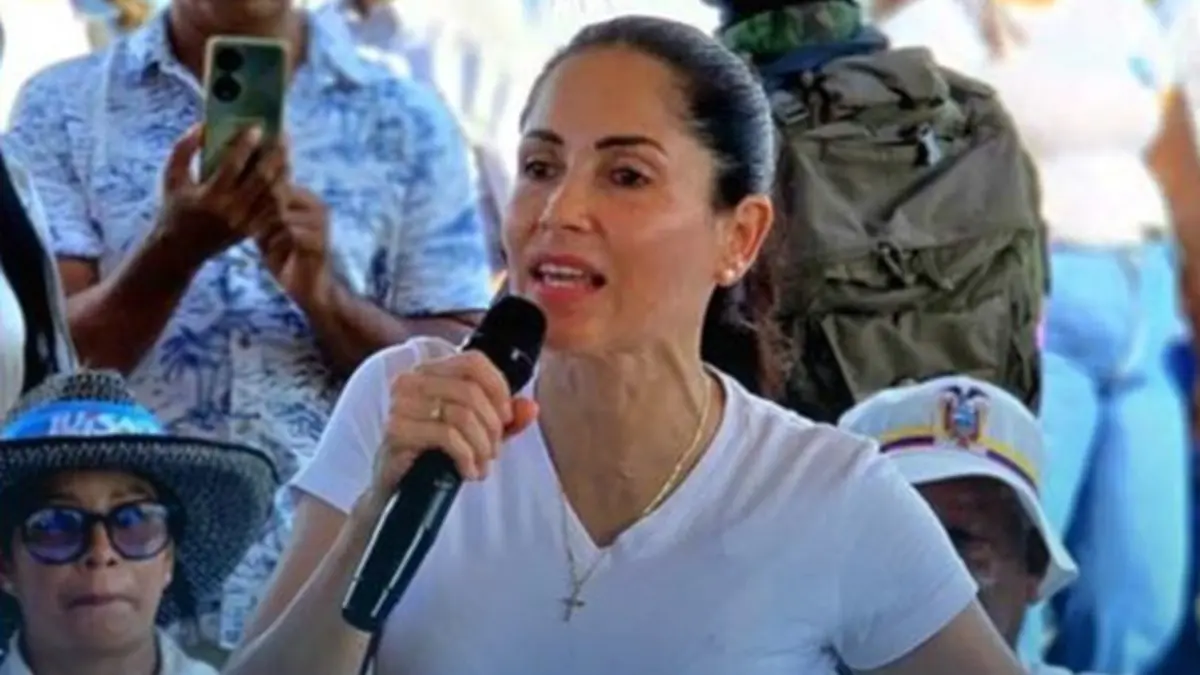U.S. Presidential Candidates’ Touting of Economic Plans an Election Bluff or Not?

A U.S. citizen campaigns against former President Donald Trump, Sept. 8, 2024. Photo: X/ @KamalaHarris
September 9, 2024 Hour: 8:30 am
The candidates’ economic promises seem to be nothing more than castles in the air.
The U.S. presidential election campaign is in full swing as Democratic and Republican presidential candidates are busy touting their respective plans for the U.S. economy, striving to outline a promising future to voters.
RELATED:
US Special Counsel Files New Indictment Against Donald Trump in January 6 Case
Reflecting on the previous U.S. presidential campaign, candidates from both parties have been struggling to persuade voters with a raft of economic promises. However, these promises, however appealing they sounded, always turned out to be nothing but pie in the sky.
In a tight race, Vice President Kamala Harris and former President Donald Trump, both presidential candidates, presented different propositions that appeared to reflect the different philosophies and priorities of their parties but in fact are election bluffs, a strategy of putting voters’ sentiment first rather than addressing real economic problems.
“OPPORTUNITY ECONOMY” VS “AMERICA FIRST”
Harris outlined her economic plan at a campaign rally in North Carolina in August, calling her agenda a way to create an “opportunity economy.” She voiced support for stricter regulation of businesses, more social benefits for the middle class, and higher taxes on businesses and high-income people.
Fighting inflation, reducing housing and health care costs, and reducing the tax burden on middle-class families constitute the three pillars of her economic policy. To address soaring food prices, Harris proposed a federal ban on “corporate price-gouging” on food and groceries.
“My plan will include new penalties for opportunistic companies that exploit crises and break the rules,” she said, promising to curb the high cost of housing by increasing the housing supply, and to impose strict regulation and antitrust measures on the medical industry to reduce prescription drug prices.
She also advocated imposing more taxes on high-income households and businesses, reducing the tax burden on low- and middle-income households, and increasing spending on low-income households.
Trump’s main economic policies include raising tariffs on imported goods, extending the Tax Cuts and Jobs Act, financial deregulation, lowering corporate tax rates, and expanding domestic oil and gas drilling. These proposals represent a continuation of his “America First” policy of protecting U.S. economic interests through tax cuts, deregulation, and trade protectionism.
On trade policy, Trump proposed imposing tariffs of 10-20 percent on all goods imported from foreign countries, arguing that tariffs will not only bring revenue, but also promote supply chain repatriation, and encourage companies to build factories in the United States.
Trump also advocated extending the Tax Cuts and Jobs Act, which is set to expire at the end of 2025, lowering corporate income tax rates and promising to lower the prices of cars, homes, insurance, and prescription drugs. He will drill for oil in the United States, as the nation boasts one of the biggest oil reserves worldwide. The former president said this will bring down inflation.
EMPTY PROMISES BORN SIDE EFFECTS
Polls show Harris’s economic policies fail to boost support but raise doubts instead. Critics argue that most of her proposals require cooperation in Congress, making them difficult to implement, while others believe that enacting her policies would increase fiscal strain, and that more burden to an already debt-reliant federal government by feeding on empty promises.
Michael Jones, an associate professor and educator of economics at the University of Cincinnati, warned that Harris’s proposed price controls could lead to product shortages. On tax cuts, Mark Zandi, chief economist of Moody’s Analytics, noted that the tax credits Harris advocates might ultimately increase the national debt, driving up overall inflation and hurting consumers.
The country’s Tax Foundation pointed out that Harris’s economic policies could add more than 2 trillion dollars in costs over the next decade, worsening the debt crisis and prompting the Federal Reserve to maintain high interest rates for a longer period.
Experts believe Harris’s continued expansion of public spending will inevitably increase budgetary pressure. The partisan battles over the debt ceiling and fiscal year budget are likely to intensify, further hindering Harris’s ability to fulfill her economic promises.
Regarding Trump, public opinion widely holds that strategies like imposing tariffs on foreign goods may encourage some manufacturing companies to return to the United States in the short term. However, in the long run, these policies are expected to drive up inflation, slow economic growth, and potentially trigger trade wars that threaten global economic stability.
Additionally, tariff barriers would raise manufacturing costs, undermining the international competitiveness of U.S. industries. Ultimately, this poisoned-chalice approach could lead to an economic disaster.
A study by the Center for American Progress Action found that Trump’s tariff plans would effectively add 3,900 dollars in tax burdens for every middle-income household. Meanwhile, the Tax Foundation projected that imposing tariffs on all imported goods would shrink the U.S. economy by 1.1 percent and put over 825,000 American jobs at risk.
Some media commentators have noted that extending tax reductions and lowering corporate taxes could increase the federal budget deficit without corresponding spending cuts.
Additionally, Trump’s proposals to expand fossil fuel extraction and roll back policies promoting clean energy development could undermine the United States’ competitiveness in the global green economy.
Desmond Lachman, an economist at the American Enterprise Institute, said that neither Trump nor Harris has presented plans to make U.S. public finances more sustainable. Instead of addressing ways to reduce the budget deficit, their campaign promises could exacerbate the country’s public finance issues.
VIBES MATTER
Historically, making various promises to voters during campaigns is a traditional skill of U.S. presidential candidates. Winning votes often relies more on vibes than on concrete policy.
In the current U.S. election, amid a political climate dominated by identity politics and ideology, and against a backdrop of widespread economic dissatisfaction among key voters, economic issues have become a tool for emotional mobilization, used by both parties to build political momentum.
Marc Goldwein, senior vice president and senior policy director for the Committee for a Responsible Federal Budget, said that since the 2008 election, U.S. presidential candidates have increasingly provided fewer details in their campaign platforms, with less emphasis on how to implement their proposals.
“Presidential campaigns don’t view policy details as winning messages in and of themselves, however, but as elements of a broader story about who their candidate is and why he or she has the credibility to accomplish what’s being promised,” reported The Wall Street Journal.
Gregory Cusack, a former congressman from the U.S. state of Iowa, observed that neither Harris nor Trump has presented specific measures for implementing their so-called economic policies.
In Goldwein’s view, while the competition between Harris and Trump to win over voters with generous fiscal spending promises is a perfectly rational campaign strategy, it is not a sound approach to national governance.
“Folks don’t vote for 10-point plans,” Patrick Gaspard, a policy guru and head of the Center for American Progress, said in an interview with Bloomberg News during the Democratic National Convention. “Every election for the last 200 years has been a vibes election.”
However, this approach of making grand promises and focusing on creating a favorable vibe can also backfire. For example, during his presidential campaign, George H.W. Bush made a solemn pledge not to raise taxes. Yet, once in office and faced with a high deficit, he ultimately had to compromise with Congress and increase taxes. This flaw contributed to his defeat by Bill Clinton in the 1992 re-election bid.
teleSUR/ JF Source: Xinhua






